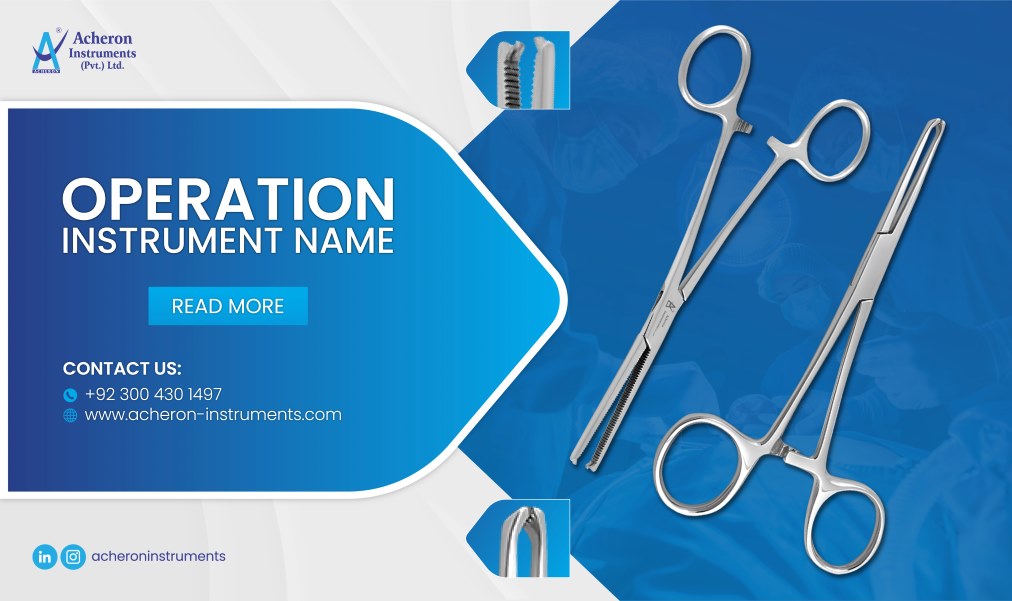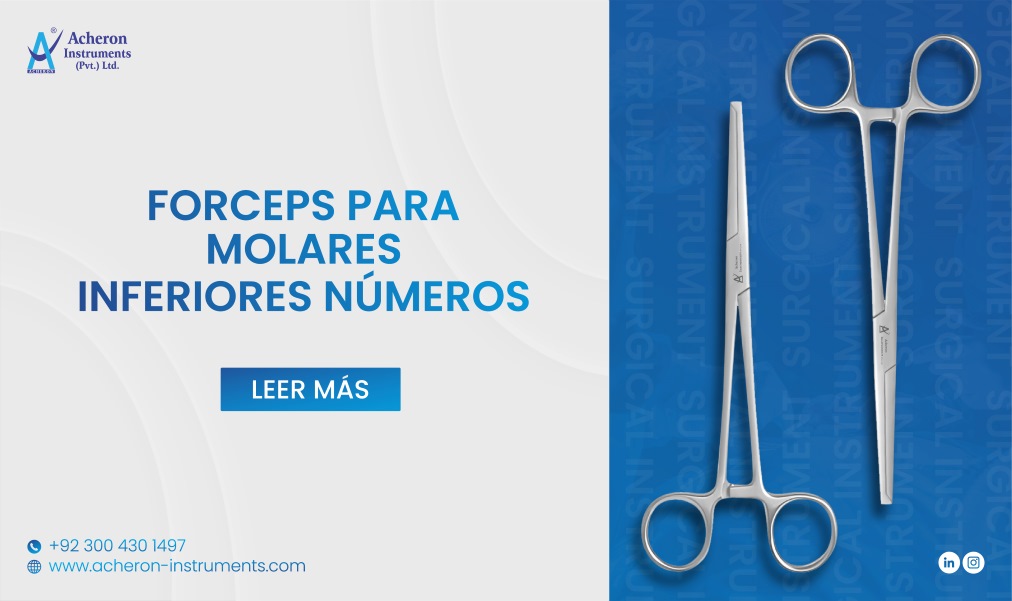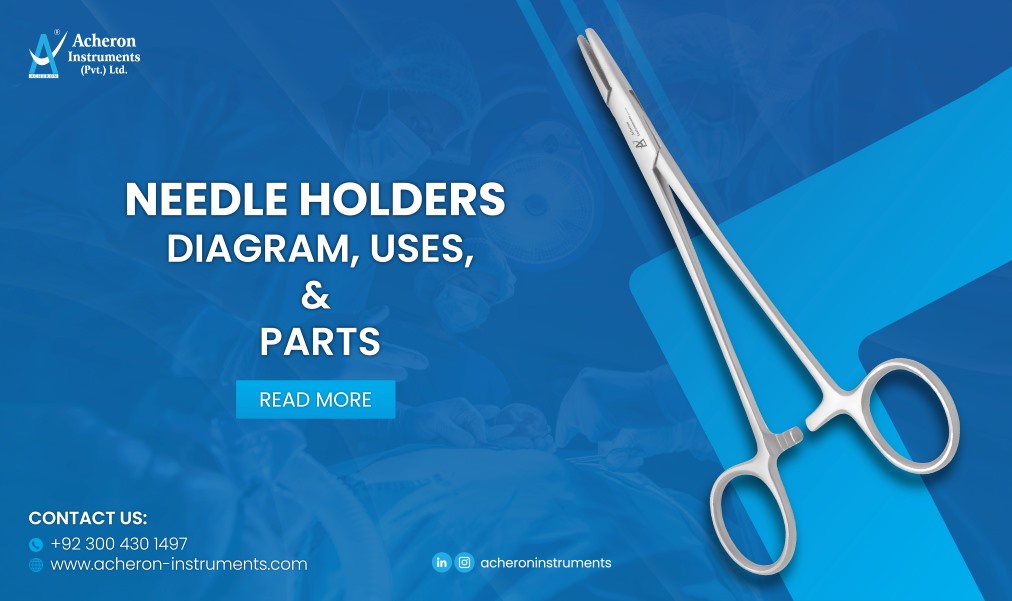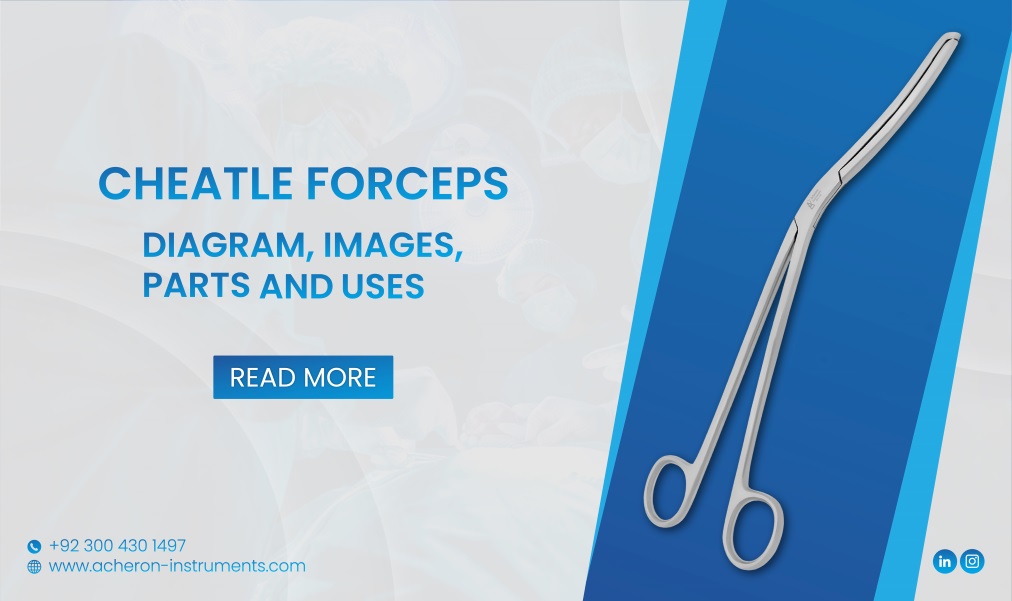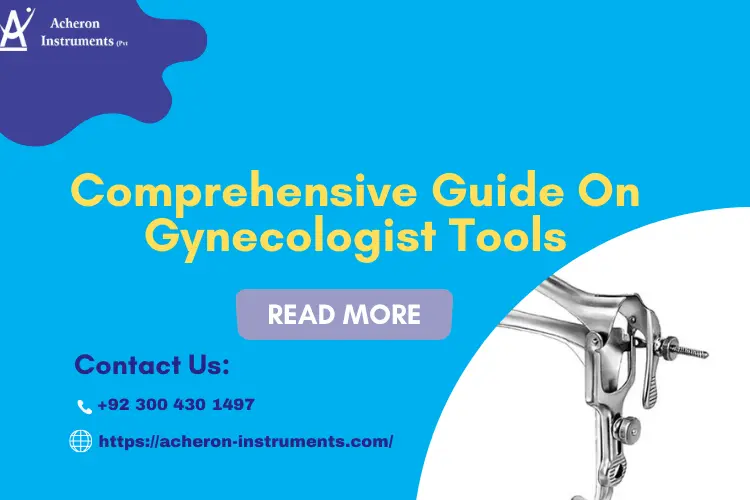 Precision and accuracy are paramount for all kinds of gynecological procedures. Even a single mistake is not acceptable when it comes to gynecological practices. This is because this procedure deals with female reproductive organs that require utmost attention. Surgeons deal with different reproductive organs including fallopian tubes, ovum, ovaries, and uterus. Therefore, gynecologist tools must be used for a successful operation.
Precision and accuracy are paramount for all kinds of gynecological procedures. Even a single mistake is not acceptable when it comes to gynecological practices. This is because this procedure deals with female reproductive organs that require utmost attention. Surgeons deal with different reproductive organs including fallopian tubes, ovum, ovaries, and uterus. Therefore, gynecologist tools must be used for a successful operation.
For such intricate surgeries, surgeons make sure that they use the right equipment that not only boosts their surgical performance but also reduces fatigue. In this blog, we are going to discuss gynecological tools that must be a part of every operating room toolkit. But first, let’s talk about the gynecologist instrument. What they are? Why are they important? What are their types and much more?
A brief introduction to gynecologist tools
All the instruments designed for examining and dealing with female reproductive organs including the uterus, ovaries, fallopian tubes, and ovum, etc. are called gynecologist tools. Also, these are multi-purpose tools that ensure proficient functionality during gynecological practices.
Not only this, these incredible tools hold prime importance when it comes to minimizing the potential risks to the patients. Nevertheless, these surgical tools possess distinct features that attract users, influencing their preferences over alternative variants.
We manufacture gynecologist tools with the highest quality that reduce the risk of infection in the womb during deliveries. Moreover, these essential tools are also helpful for the surgeons to protect the reproductive organs until the operation is completed.
Different types of gynecological surgical instruments
Gynecological procedures require intensive care and precision. You have to perform your best version, especially during the cesarean section and normal delivery procedures as a single mistake could be life-threatening. Therefore, you need the best surgical equipment to take out baby from the womb successfully.
Let’s discuss some of the most commonly used gynecological tools that will ease your surgical practices.
Examination Gynecologist tools
Speculum: This is a hinged instrument that is greatly useful for examining the cervix and the vagina. This tool comprises two blades to visualize the cervix as they can be opened and closed easily. Also, there are generally two speculums that come into use. The univalve speculum comes into use when the vaginal opening is narrow. Whereas, a bivalve speculum is useful for routine examinations.
Sonogram: this non-invasive diagnostic tool also referred to as ultrasound produces images of reproductive organs with the help of sound waves. It examines fetal development and is also useful in diagnosing conditions such as uterine fibroids and uterine cysts.
Mirrors: Gynecological mirrors are greatly useful for pelvic examinations. These mirrors assist surgeons to examine the vagina and cervix area. Also, it gives a clear understanding of the gynecological conditions by observing them through the mirror’s reflection.
Spoons and probes: These incredible tools are useful for examining the uterus. Moreover, these tools help identify the uterus and check if it is open before moving on to the next steps in a procedure.
Dilators/expanders: expanders or dilators are tools that can gently widen or enlarge certain anatomical structures for therapeutic or diagnostics purposes. These expanders assist surgeons in enlarging the cervix to get a clear view from the inside.
Retractors
Surgical retractors are essentially useful for multiple medical interventions, diagnoses as well and certain examinations. Retractors can easily hold back organs and tissues and also provide better accessibility and visibility to the area that needs to be treated. The retractors used in gynecological procedures include
Vaginal retractors: you can get a clear view of the cervix area by gently holding back the vaginal walls.
Abdominal retractors: these tools hold back the edges of an incision and provide access to the abdominal cavity. This is incredibly useful during abdominal surgeries, such as cesarean sections
Speculums
Surgical speculums are devices used to open and widen the body area, particularly the vagina, for examination of the cervix and vaginal walls. Here are the common types of speculums used in gynecological practices:
Vaginal speculum: This is one of the most common types used in gynecology. it is inserted into the vagina to gently separate the vaginal walls, allowing healthcare professionals to visualize the cervix and collect samples for multiple tests.
Rectal Speculum: In some cases, surgeons may use a rectal speculum
for examining the rectum or lower digestive tract.
Forceps
There are numerous forceps used in gynecological surgeries. Also, these surgical forceps hold significant importance as they are useful for holding, manipulating, and handling tissues during surgeries and examinations. You can choose from a wide range of our forceps depending on the specific procedure requirement. Some of the commonly used forceps in gynecology include:
Tenaculum forceps
These forceps come into use when you need to hold or stabilize the cervix and other tissues during procedures such as IUD placement, colposcopy as well and other surgical interventions. Also, the unique design of this tool also reduces the risk of any damage during performance.
Obstetrical forceps
These forceps are extremely helpful in certain gynecological procedures, especially during the delivery of the baby. Doctors can manage certain situations during labor and delivery with the help of this tool. Additionally, the primary purpose of this tool is to grasp and guide the baby’s head gently through the birth canal which is especially useful regarding certain complications.
Uterine Polypus Forceps
Surgeons use this tool to separate uterine polyps from the lining to avoid problems for the patient. Uterine polyps are dangerous as they can cause serious issues for a woman’s reproductive health especially if not treated well. Therefore, surgeons need to make use of this tool to ensure a deep and thorough removal of polyps.
Ovum forceps
This instrument is exceptionally reliable for clearing the placental space after the completion of a procedure. Not only this, it also ensures the thorough removal of any remaining fragments and debris, thereby maintaining a clean and sterile environment.
Sponge forceps
Sponge forceps are multi-purpose tools that assist surgeons in multiple surgical scenarios. Firstly, these forceps are useful for holding and manipulating sponges or gauze during medical procedures. This is especially helpful during operations where it is necessary to control bleeding, absorb fluids, or keep the surgical field clear.
Secondly, These special tools can also gently put surgical items into the body without causing harm to the inside. The sponges on these tools help prevent any discomfort for the patient during the procedure.
Additional Obstetrics and Gynecologist tools
Let’s discuss some other Obgyn tools that also help surgeons during gynecological procedures.
Curettes
These tools allow surgeons to scrape, scoop, or remove tissues from the inner lining of the uterus or other parts of the reproductive system. Also, this amazing tool prevents any kind of damage to the fragile internal lining of the mother after delivery.
Clamps and Pliers
These are essential surgical instruments that serve so many surgical advantages. Clamps and pliers are useful during tissue handling, retraction purposes, suturing assistance, organ suspension, and whatnot. Also, the hemostatic clamps are beneficial for controlling excessive bleeding in procedures such as hysterectomy or ovarian surgery.
Scissors
Not a single operation can be done without the help of surgical scissors. Surgical scissors assist doctors at many levels. From dissecting delicate tissues to suturing procedures, surgical scissors serve numerous surgical benefits.
Conchotomas
These ob-gyn instruments are utilized to handle cervical tissues during essential tests. Therefore, they allow surgeons for the extraction of tissue fragments for prompt biopsy.
Needles
These are necessary for immediate procedures, such as administering anesthesia to relieve labor contractions in patients.
Lance shaped perforators
These instruments are commonly used to obtain fibroids and manipulate tissues and membranes during medical procedures.
Conclusion
Reproductive health of females is necessary. Surgeons should make sure that they give their best performance while handling the delicate reproductive organs. Not only this, they also need to make sure that they use the right surgical equipment to make the surgery successful and effective. Surgical instruments such as forceps, retractors, and speculums make the surgical procedure easy and highly efficient. Thus, every operating room toolkit must have these surgical instruments.
If you are looking for high-quality medical equipment for your healthcare facilities, look no further. We at Acheron Instruments have been manufacturing top-notch quality gynecology surgical instruments for decades. Also, you will get our premium-grade German stainless steel surgical instruments at the most competitive prices. Moreover, we emphasize customer satisfaction and take customized orders too. All you need to do is contact us
FAQ’s
What kind of gynecologist tools do Acheron Instruments offer?
We offer a wide range of gynecologist tools including the speculum, vaginal forceps, retractors, scissors, etc.
What is the material of Acheron Instruments gynecologist tools?
We manufacture our instruments from premium-grade German stainless steel material that makes them reliable, robust, and durable.
How can I purchase Acheron Instruments’ medical instruments?
You can source them directly from our website Get a quote, send an email, or contact us at our given number for further assistance.


